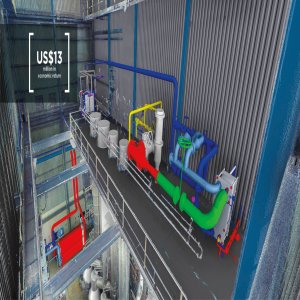Segmented Market for Merchant and Auction Projects

STORY INLINE POST
Q: How is the market correcting the imbalance between producers wanting to sell at market prices and qualified users and suppliers wanting to purchase at auction prices?
A: Auction price levels are influenced by the contracted volume, the time frame of the contract and CFE’s prevailing status as the single off-taker. It is hard for a trader to access the same prices of a high-volume and long-term buyer. So, anyone seeking to buy at auction price levels should have the financial capacity to purchase the corresponding high volumes and long settlement periods. But this can only be done with a critical mass of residential users, as CFE has. It mimics the behavior of other commodities or currency exchanges; nobody will trade below the spot price.
The decreasing trend of long-term electricity auction prices is forcing the rest of the value chain to maximize savings. It resembles an inverse auction in which the winning bidder is the one offering the lowest tariff and generates the greatest savings compared to a reference price. This reduces the margins for all the project participants, lowering their capacity to face any unexpected market changes. This also reflects a market imbalance as there is a preponderant player and a probable failure to follow the perfect competition model that enables the market to offer the best prices and lowest costs. I expect a market segmentation in which lower-volume projects can be pursued, opening the door to better offer prices and higher investment returns. But we cannot expect the case of a large market buyer to become a generalized rule for the industry. It would be a mistake to believe that the WEM will provide the same conditions to all when not all have the same purchasing power.
Q: Given that CRE will have the lead on any upcoming auctions and the disclosed guidelines, how will sector needs materialize in the evolving auction guidelines?
A: The first auctions were designed to maximize buyers’ savings. These aimed to foster clean energy generation while maximizing purchasers’ economy but do not necessarily correspond to a strategic management of the generation matrix nor weigh in the development stage of a project. The first long-term electricity auction was reduced to proposing the price yielding the largest savings, regardless if the bidder has the required permits. I also think that segmenting auctions by technologies would give price development more transparency, while also being aligned with the evolution of an ideal energy matrix. We must aim to make the auctions process more efficient and responsive to the market.
Q: What financial entities are best suited to accompany efforts for utility-scale projects?
A: We anticipate greater participation of CERPIs and CKDs, especially for the long term. Private equity is also interested in the market but not at the prices offered in the long-term electricity auctions. It is important to note that the sector is recovering from a downward cycle that began in 2008. In the last two years, we have seen a recovery of interest rates as the US economy bounced back. But the US government does not want its economy to overheat so it is slowing it down by increasing interest rates. This is translated to Mexico with interbank and CETES savings account rates sitting at 7-8 percent, to mention one example. As long as we keep going down this path, projects will have greater discount rates and could become more appealing to private equity at the appropriate rates. But if the goal is to yield greater savings to the buyer, even at the expense of the investors’ returns, it is unlikely to motivate private investors to enter the market, especially for wholesale electricity projects.
Development and commercial banking have backed up project development. In this case, commercial banking has further incentive to take part but is not yet comfortable with the merchant risk. As long as electricity wholesale operations do not mature, commercial banking will not be fully comfortable, which in the end is translated to interest rates and project costs. So, projects with high uncertainty will hardly meet competitive market prices. The cost of money is on the rise, so tariffs are also following the same direction.
























